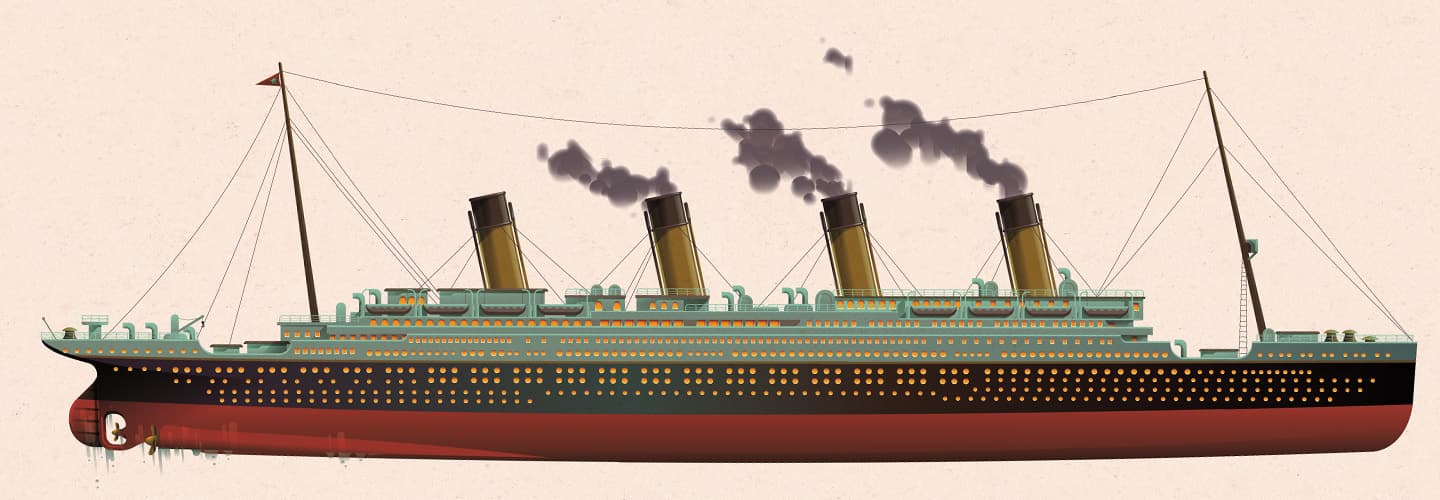The story of the Titanic began years before its one and only voyage. Construction of the massive ocean liner started in 1909. Over the course of more than two years, thousands of men worked on the ship. Many worked six days a week, from early morning until late evening.
Building the world’s biggest ship was dangerous work. Eight men died, and more than 200 were injured. In the end, they turned thousands of thick sheets of steel into a floating palace.
With the most advanced safety features at the time, the Titanic was thought to be unsinkable. Sadly, that was not the case. On April 14, 1912, the ship’s steel hull, or frame, scraped an iceberg. Some of the ship’s iron rivets popped out, and water gushed into the lower compartments. Before long, the Titanic could no longer stay afloat.
Take a look inside the mighty ship to find out more about what happened on the night it sank.

